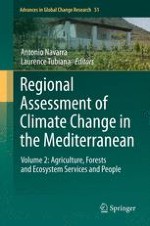Volume 2 of a three-volume final report thoroughly describes, synthesizes and analyzes the results of the four-year Integrated Research Project CIRCE – Climate Change and Impact Research: Mediterranean Environment, funded by the EU 6th Framework Programme. Conducted under the auspices of the National Institute of Geophysics and Volcanology in Rome, Italy, CIRCE was designed to predict and to quantify the physical impacts of climate change in the Mediterranean, and to assess the most influential consequences for the region’s population. This volume incorporates Parts 3 and 4 of the report, reviewing current knowledge of observed climate variability and trends in the Mediterranean, and including descriptions of available temperature and precipitation station and gridded data sets.
